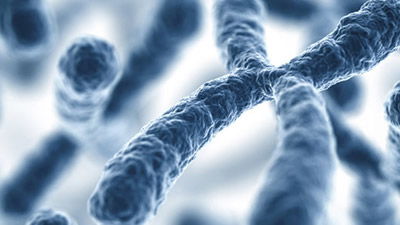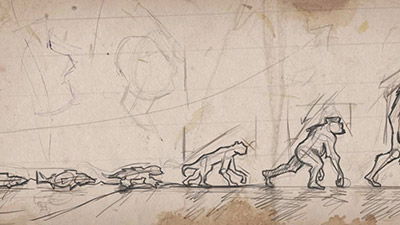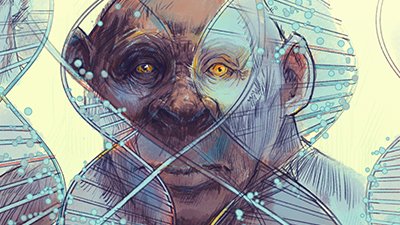The Evolutionary Problem with Grandmothers
Grandmothers? What’s the Evolutionary Use?
In an evolutionary worldview, human grandmothers are a bit of a puzzle. In most animal species, females do not survive long after their childbearing years have ended. Human females, however, can and often do survive for decades after menopause, the hormonal change which concludes their childbearing years at around age 50. Studies such as the one mentioned below apply an evolutionary worldview in an attempt to explain what (or in this case, who) we see around us.
Why would evolution favor human grandmothers?
In this worldview, organisms are generally only helpful to the continued survival and evolution of the species if they can reproduce. Once an organism can no longer reproduce, it is merely taking up space and resources that could go towards either the reproducing or young members of the species. So why would evolution favor human grandmothers? Our life span should have evolved to be shorter, especially for women since, unlike men, there is a defined ending to their ability to reproduce. That is the evolutionary problem with grandmothers.
There Must Be an Evolutionary Explanation of Why Grandmothers Exist!
Defying evolutionary beliefs, grandparents have existed throughout recorded human history, and since we must have an evolutionary justification story for everything, the researchers of a new study have woven together an explanation with a slight twist.1 To be fair, this paper is looking specifically at how distance affected the “grandmother hypothesis,” which has been around at least since 2004. And that hypothesis was built upon “explaining old age by natural selection” in papers going back to at least 1966.2
In a nutshell, the “grandmother hypothesis” postulates that post-reproductive life spans are selected for in older women because grandmothers “gain inclusive fitness benefits by helping their daughters and grandchildren.”3 But in this new study, the authors looked at the distance between their mothers and their daughters to determine if there was a correlation. By looking over detailed church records from Quebec, Canada, in an age (1608–1799) where travel was much more difficult, they discovered slightly overall positive effects of the presence of the (grand)mother living in close proximity when her daughter was giving birth at a younger age and the number of offspring born, as well as lower chances of infant mortality.4 They also found that distance did affect the benefits, with grandmothers who lived over 50 km (31 miles) away providing severely decreased benefit to the mother or grandchildren, suggesting that geographic distance may constrain the ability of the mothers to help their daughters (and grandchildren), resulting in a decrease in fitness benefits with distance.5 But the authors admit that the evolutionary explanation is still elusive.
The question of why prolonged PRLS [post-reproductive life span] has evolved remains unanswered. Evolutionary pathways to prolonged PRLS have yet to be supported. Future research should apply quantitative genetic analyses to test evolutionary genetic hypotheses and assess the relative importance of PRLS hypotheses. The indirect fitness benefits accrued by grandmothers in our study support the proposition that the grandmother hypothesis can, in part, explain PRLS.6
In other words, from an evolutionary perspective, they cannot explain why women live long past their child-bearing years. Although the study mentioned above did find a positive correlation, it was slight and could just as readily be explained as a result of religion and community (French-speaking, Catholic, founder settler population initially). If evolutionary biologists were to be consistent with their evolutionary paradigm, it would seem that the expenditure of community resources on non-reproductive members would outweigh or at least even out the “babysitter benefits.”
From an evolutionary perspective, they cannot explain why women live long past their child-bearing years.
Indeed, when one takes the evolutionary worldview to its logical conclusion, it becomes evident that euthanasia is the natural consequence. Euthanasia, typically defined as the intentional ending of the life of someone who is suffering, is increasingly being broadened to include those who are simply very elderly. In the evolutionary worldview that has increasingly permeated Western culture for over 150 years, this makes sense. Clear out the elderly so resources can be freed up for younger, healthier, and more productive persons.
“Do Not Despise Your Mother When She Is Old”
Of course, such thinking is foreign to the pages of Scripture. God, in his Word, instructs us to have great respect for the elderly and the role they have in our homes, churches, and societies. Elderly people are not some kind of a drain on humanity. They are valuable individuals, made in God’s image and given a purpose by him in their later years.
You shall stand up before the gray head and honor the face of an old man, and you shall fear your God: I am the Lord. (Leviticus 19:32)
Listen to your father who gave you life,
and do not despise your mother when she is old. (Proverbs 23:22)
The glory of young men is their strength,
but the splendor of old men is their gray hair. (Proverbs 20:29)
Wisdom is with the aged,
and understanding in length of days. (Job 12:12)
And there was a prophetess, Anna . . . . She was advanced in years . . . . She did not depart from the temple, worshiping with fasting and prayer night and day. (Luke 2:36–37)
So even to old age and gray hairs,
O God, do not forsake me,
until I proclaim your might to another generation,
your power to all those to come. (Psalm 71:18)
I am reminded of your sincere faith, a faith that dwelt first in your grandmother Lois and your mother Eunice and now, I am sure, dwells in you as well. (2 Timothy 1:5)
Euthanasia might be acceptable in an evolutionary worldview where mankind is just an animal and we determine right from wrong. But it is not acceptable, and in fact is condemned in a biblical worldview. Humans are distinctly made in the image of God (Genesis 1:27), from womb to tomb, and old age is to be valued and respected. So next time you see your grandmother, if you are still blessed to have her, thank God for her and the unique value a biblical worldview gives about our seniors.
Footnotes
- Sacha C. Engelhardt et. al., “Using Geographic Distance as a Potential Proxy for Help in the Assessment of the Grandmother Hypothesis,” Current Biology 29 (2019): 651–656, doi:10.1016/j.cub.2019.01.027.
- W. D. Hamilton, “The Moulding of Senescence by Natural Selection,” Journal of Theoretical Biology 12, no. 1 (1966): 12–45, doi:10.1016/0022-5193(66)90184-6.
- Englehardt et.al., “Using Geographic Distance,” 652.
- Ibid., 652–653.
- Ibid., 654.
- Ibid., 655.
Recommended Resources

Answers in Genesis is an apologetics ministry, dedicated to helping Christians defend their faith and proclaim the good news of Jesus Christ.
- Customer Service 800.778.3390
- Available Monday–Friday | 9 AM–5 PM ET
- © 2025 Answers in Genesis





